Popular categories
Looking for a yarn?

50% Cotton, 50% Polyester
from 1.80 $ /50g
Order DROPS Cotton Light from Wool Warehouse Direct Ltd
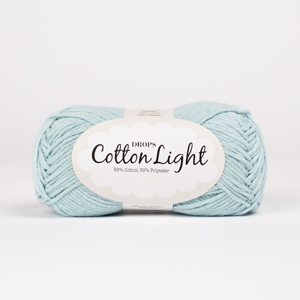
|
DROPS Cotton Light uni colour 50% Cotton, 50% Polyester |
1.80 $ /50g |
Order |
Clicking the ORDER button will redirect you to Wool Warehouse Direct Ltd website
Order DROPS Needles & Hooks
Clicking the ORDER button will redirect you to Wool Warehouse Direct Ltd website
The yarn cost is calculated from the pattern’s smallest size and the yarn’s cheapest product type. Looking for an even better price? You might find it on the DROPS Deals!
Charming Clover Top
Crocheted top in DROPS Cotton Light. The piece is worked with lace pattern and straps. Sizes XS - XXL.
Change language:
English (US/in)- English (US/in)
- Česky
- Dansk
- Deutsch
- Eesti keel
- English (UK/cm)
- Español
- Français
- Íslenska
- Italiano
- Magyar
- Nederlands
- Norsk
- Polski
- Português
- Suomi
- Svenska
- English (UK/cm), Bulgaria
- English (UK/cm), Croatia
- English (UK/cm), Greece
- English (UK/cm), Latvia
- English (UK/cm), Lithuania
- English (UK/cm), Romania
- English (UK/cm), Slovenia
- Česky, Slovakia
#charmingclovertop
DROPS Design: Pattern cl-126Yarn group B
-------------------------------------------------------
SIZES:
XS - S - M - L - XL – XXL
Finished measurements:
Chest measurements: 61-67-72-83-94-105 cm = 24"-26⅜"-28⅜"-32¾"-37"-41⅜"
Full length: 31-34-36-38-40-42 cm = 12¼"-13⅜"-14¼"-15"-15¾"-16½"
All measurements in charts are in cm.
YARN:
DROPS COTTON LIGHT from Garnstudio (belongs to yarn group B)
150-150-200-200-250-250 g color 22, brown khaki
CROCHET HOOK:
DROPS CROCHET HOOK SIZE 3.5 MM = US E/4.
CROCHET GAUGE:
18 double crochets in width and 10 rows in height = 10 x 10 cm = 4" x 4".
Hook size is only a guide. If you get too many stitches on 10 cm = 4", change to a larger hook size. If you get too few stitches on 10 cm = 4", change to a smaller hook size.
-------------------------------------------------------
Alternative Yarn – See how to change yarns here
Yarn Groups A to F – Use the same pattern and change the yarn here
Yarn usage using an alternative yarn – Use our yarn converter here
-------------------------------------------------------
You might also like...

50% Cotton, 50% Polyester
from 1.80 $ /50g
Order DROPS Cotton Light from Wool Warehouse Direct Ltd

|
DROPS Cotton Light uni colour 50% Cotton, 50% Polyester 1.80 $ /50g Order |
Clicking the ORDER button will redirect you to Wool Warehouse Direct Ltd website
Order DROPS Needles & Hooks
Clicking the ORDER button will redirect you to Wool Warehouse Direct Ltd website
The yarn cost is calculated from the pattern’s smallest size and the yarn’s cheapest product type. Looking for an even better price? You might find it on the DROPS Deals!
Pattern instructions
EXPLANATIONS FOR THE PATTERN:
-------------------------------------------------------
CROCHET INFORMATION:
CHAIN STITCH:
If you work outermost on the hook the chain stitch will often be too tight; 1 chain stitch should be as long as 1 single/double crochet is wide.
DOUBLE CROCHETS:
At the beginning of each row of double crochets work 3 chain stitches, which replace the first double crochet, i.e. skip the first stitch from the previous row.
SINGLE CROCHETS:
At the beginning of each row of single crochets work 1 chain stitch, which replaces the first single crochet, i.e. skip the first stitch from the previous row.
PATTERN:
See diagrams A.1 to A.10.
CROCHET TIP:
If you want the top to cover slightly more at the front, you can work the cups together with a small overlap in the middle.
Position the cups with overlap and crochet single crochets underneath, adjusting the number of stitches to how much overlap you have.
-------------------------------------------------------
START THE PIECE HERE:
-------------------------------------------------------
TOP – SHORT OVERVIEW OF THE PIECE:
The cups are worked separately, back and forth, then worked together. The body is worked back and forth and the cups either sewn or crocheted to the body. Work 1 strap for each cup and a strap to tie the top together at mid back.
CUPS:
Work 14-15-16-20-21-22 chain stitches with hook size 3.5 MM = US E/4 and DROPS Cotton Light.
Read CROCHET INFORMATION above.
Work 1 double crochet in the 4th chain stitch from the hook, then 1 double crochet in each of the next 9-10-11-15-16-17 chain stitches (1 chain stitch left), work diagram A.1 in this last chain stitch (top of cup). Turn and work below the chain-stitch row, with 1 double crochet in the bottom of each of the 11-12-13-17-18-19 double crochets worked along the other side of the chain-stitch row (the last double crochet is worked in the bottom of the 3 chain stitches which replaced the first double crochet). There are 26-28-30-38-40-42 double crochets and 1 chain stitch on the row. Turn.
Work back and forth with 1 double crochet in each stitch but around the chain stitch in the middle of A.1 work diagram A.1 (4 double crochets increased on the row). REMEMBER THE CROCHET GAUGE!
Work like this until you have 5-6-7-8-9-10 rows of double crochets.
There are 42-48-54-66-72-78 double crochets and 1 chain stitch on the row.
Work according to diagrams A.2 to A.6 as follows:
ROW 1: Work A.2 over 3 stitches, A.3 as far as the middle chain stitch in A.1 (6-7-8-10-11-12 times), work A.4 in the chain stitch, A.5 until there are 3 stitches left (6-7-8-10-11-12 times) (the pattern is symmetrical on either side of A.4), work A.6 over 3 stitches. Turn.
ROW 2: Work A.6 over A.6, A.5 between each double-crochet group as far as the first chain stitch in A.4 (5-6-7-9-10-11 times), work A.5 around the first chain stitch in A.4, A.4 around the middle chain stitch in A.4, A.3 around the last chain stitch in A.4, A.3 between each double-crochet group (5-6-7-9-10-11 times), A.2 over A.2. Finish the row with 1 slip stitch in the 3rd chain stitch from 1st row = 52-58-64-76-82-85 stitches. Cut and fasten the strand.
Work 1 more cup in the same way.
ASSEMBLING THE CUPS:
Read CROCHET TIP above. Use crochet hook size 3.5 MM = US E/4 and DROPS Cotton Light. Work approx. 29-32-36-39-43-47 single crochets along the bottom of the first cup, then approx. 29-32-36-39-43-47 single crochets along the bottom of the second cup. Cut and fasten the strand.
BODY:
Work 123-137-146-168-191-213 chain stitches with hook size 3.5 MM = US E/4 and DROPS Cotton Light. Read CROCHET INFORMATION above. Turn. Start in the 2nd chain stitch from the hook and work diagrams A.7 to A.10 as follows:
ROW 1 (wrong side): Work A.7, then alternately A.8 and A.9 until there are 1-5-5-1-5-1 chain stitches left, work A.9 0-1-1-0-1-0 time and A.10. There are 109-121-129-149-169-189 single crochets.
ROW 2 (right side): Work A.10, A.9 until there are 4 stitches left and finish with A.7 =
111-127-135-151-175-191 stitches.
ROW 3 (wrong side): Work A.7, A.9 until there are 3 stitches left and finish with A.10. Repat as shown in A.x Repeat rows 2 and 3 until the piece measures 16-17-18-16-17-17 cm = 6¼"-6¾"-7"-6¼"-6¾"-6¾" or to desired length. Cut and fasten the strand.
ASSEMBLY:
Position the cups on the middle of the body, place them along the chain stitches from the beginning of the body and sew or crochet them to the body. Sew in the outermost loop of the outermost stitch or crochet slip stitches so the seam is flat and neat.
STRAPS:
Use crochet hook size 3.5 MM = US E/4 and 2 strands DROPS Cotton Light. Work chain stitches to a length of 110-115 cm = 43⅜"-45¼" or to desired length. Work 3 straps, one for each cup and one to close the body at the back.
Fold one strap in the middle, insert the loop-end through the top of one cup, thread the ends through the loop and pull tight. Fasten the other strap in the same way on the other cup.
Fold the body, with the short-sides together. Thread the end of the last strap through each side at the top, then cross back and forth, threading through alternate sides, with the ends finally coming out at the bottom of the body. Tie the ends together.
This pattern has been corrected. Click here to see the correction/s.
Correction on BODY and correction in diagram A.7 to A.10.
Diagram
All measurements in charts are in cm.

|
= first chain stitch from beginning of piece |

|
= 2 dobule crochets around same chain stitch |

|
= 1 chain stitch |

|
= row already worked; start on next row in diagram |

|
= double crochet |

|
= 3 chain stitches |

|
= 3 double crochets in same stitch / 3 double crochets between 2 double-crochet groups |

|
= 3 chain stitches and 2 double crochets in first stitch |

|
= 1 single crochet in stitch |


What can you do with our patterns? You can share DROPS patterns online, using the pattern original picture, materials, name and number. But you are NOT ALLOWED to reproduce the complete pattern digitally in any way. Yarn stores are welcome to use the DROPS pattern database to promote the sale of our assortment. You can print out our patterns, make as many copies as you’d like. The only thing we ask is that you don't make any changes / additions to the original printed document. And that the patterns according to the DROPS philosophy are given out to the consumers for free. Editorials that wish to publish our patterns in printed books or magazines can contact us for more information. The sale of garments based on DROPS patterns is permitted as long as they are sold as single items or per order. Further commercial use of the patterns is not permitted. It has to be clearly stated that the garment is made based on a design from DROPS DESIGN. The use of clothing labels of which DROPS DESIGN forms part is conditioned by the inclusion of the following text: “A DROPS DESIGN made by …..”. The use of DROPS photos for marketing purposes/sales is only permitted in connection with the use/sale of DROPS products. The photos may not be cut or edited and the logo should be clearly visible.
We reserve the right to withdraw the permission for use of our patterns at any time, notwithstanding the reason.
Each of our patterns has specific tutorial videos to help you.
These step-by-step tutorials might also help you:
Why is the knitting/crochet tension so important?
Knitting tension is what determines the final measurements of your work, and is usually measured per 10 x 10 cm. It is provided like so: number of stitches in width x number of rows in height - eg: 19 stitches x 26 rows = 10 x 10 cm.
The knitting tension is very individual; some people knit/crochet loosely while others work tightly. You adjust the knitting tension with the needle size, which is why the suggested needle size only serve as a guide! You need to adjust this (up or down) to ensure that YOUR knitting tension matches the knitting tension provided in the pattern. If you work with a different knitting tension than provided you will have a different yarn consumption, and your work will have different measurements than what the pattern suggests.
The knitting tension also determines which yarns can replace each other. As long as you achieve the same knitting tension you can replace one yarn with another.
See DROPS lesson: How to measure your tension/gauge
See DROPS video: How to make a gauge tension swatch
How do I know how many balls of yarn I need?
The required amount of yarn is provided in grams, eg: 450 g. To calculate how many balls you’ll need you first need to know how many grams are in 1 ball (25g, 50g or 100g). This information is available if you click on the individual yarn quality on our pages. Divide the amount required with the amount of each ball. For example, if each ball is 50g (the most common amount), the calculation will be as follows: 450 / 50 = 9 balls.
Can I use a different yarn than what the pattern suggests?
The important thing when changing from one yarn to another is that the knitting/crochet tension remains the same. This is so that the measurements of the finished piece will be the same as on the sketch provided. It is easier to achieve the same knitting tension using yarns from the same yarn group. It is also possible to work with multiple strands of a thinner yarn to achieve the knitting tension of a thicker one. Please try our yarn converter. We recommend you to always work a test swatch.
Please NOTE: when changing yarn the garment might have a different look and feel to the garment in the photo, due to individual properties and qualities of each yarn.
See DROPS lesson: Can I use a different yarn than the one mentioned in the pattern?
What are the yarn groups?
All our yarns are categorised into yarn groups (from A to F) according to thickness and knitting tension – group A contains the thinnest yarns and group F the thickest. This makes it easier for you to find alternative yarns to our patterns, should you wish to switch yarn. All yarns within the same group have a similar knitting tension and can easily replace each other. However, different yarn qualities have different structures and properties which will give the finished work a unique look and feel.
How do I use the yarn converter?
At the top of all our patterns you’ll find a link to our yarn converter, which is a helpful tool should you wish to use a different yarn than suggested. By filling in the yarn quality you wish to replace, the amount (in your size) and number of strands, the converter will present good alternative yarns with the same knitting tension. Additionally it will tell you how much you’ll require in the new qualities and whether you’ll need to work with multiple strands. Most skeins are 50g (some are 25g or 100g).
If the pattern is worked with multiple colours, every colour will have to be converted separately. Similarly, if the pattern is worked with several strands of different yarns (for example 1 strand Alpaca and 1 strand Kid-Silk) you will have to find alternatives for each, individually.
Why do you show discontinued yarns in the patterns?
Since different yarns have different qualities and textures we have chosen to keep the original yarn in our patterns. However, you can easily find options among our available qualities by using our yarn converter, or simply pick a yarn from the same yarn group.
It is possible that some retailers still have discontinued yarns in stock, or that someone has a few skeins at home that they would like to find patterns for.
The yarn converter will provide both alternative yarn as well as required amount in the new quality.
What size should I knit?
If you think it's hard to decide what size to make, it can be a good idea to measure a garment you own already and like the size of. Then you can pick the size by comparing those measures with the ones available in the pattern's size chart.
You'll find the size chart at the bottom of the pattern.
See DROPS lesson: How to read size chart
Why do I get the wrong knitting tension with the suggested needle size?
The needle size provided in the pattern serves only as a guide, the important thing is to follow the knitting tension. And since knitting tension is very individual, you will have to adjust the needle size to ensure that YOUR tension is the same as in the pattern – maybe you’ll have to adjust 1, or even 2 needle sizes, up or down to achieve the correct tension. For this, we recommend that you work test swatches.
Should you work with a different knitting tension than the one provided, the measurements of the finished garment might deviate from the measurement sketch.
See DROPS lesson: How to measure your tension/gauge
See DROPS video: How to make a gauge tension swatch
Why is the pattern worked top-down?
Working a garment top-down provides more flexibility and room for personal adjustment. For example it is easier to try the garment on while working, as well as making adjustments to length of yoke and shoulder caps.
The instructions are carefully explaining every step, in the correct order. Diagrams are adjusted to the knitting direction and are worked as usual.
How do I work according to a knitting diagram?
The diagram depicts all rows/rounds, and every stitch seen from the right side. It is read from bottom to top, from right to left. 1 square = 1 stitch.
When working back and forth, every other row is worked from the right side and every other row is worked from the wrong side. When working from the wrong side, the diagram will have to be worked reversed: from left to right, knit stitches are purled, purl stitches are knit etc.
When working in the round every round is worked from the right side and the diagram are worked from right to left on all rounds.
See DROPS lesson: How to read knitting diagrams
How do I work according to a crochet diagram?
The diagram depicts all rows/rounds, and every stitch seen from the right side. It is worked from bottom to top, from right to left.
When working back and forth every other row is worked from the right side: from right to left and every other row is worked from the wrong side: from left to right.
When working in the round, every row in the diagram are worked from the right side, from right to left.
When working a circular diagram you start in the middle and work your way outwards, counter clockwise, row by row.
The rows usually start with a given number of chain stitches (equivalent to the height of the following stitch), this will either be depicted in the diagram or explained in the pattern.
See DROPS lesson: How to read crochet diagrams
How do I work several diagrams simultaneously on the same row/round?
Instructions for working several diagrams after each other on the same row/round, will often be written like so: “work A.1, A.2, A.3 a total of 0-0-2-3-4 times". This means you work A.1 once, then A.2 is worked once, and A.3 is repeated (in width) the number of times provided for your size – in this case like so: S = 0 times, M = 0 times, L=2 times, XL= 3 times and XXL = 4 times.
The diagrams are worked as usual: begin with the first row in A.1, then work the first row in A.2 etc.
See DROPS lesson: How to read knitting diagrams
See DROPS lesson: How to read crochet diagrams
Why are the sleeves shorter in larger sizes?
The total width of the garment (from wrist-to-wrist) will be larger in the larger sizes, despite the actual sleeves being shorter. The larger sizes have longer sleeve caps and wider shoulders, so there will be a good fit in all sizes.
Where on the garment is the length measured?
The measurement sketch/schematic drawing provides information regarding the full length of the garment. If it’s a jumper or a jacket the length is measured from the highest point on the shoulder (usually closest to the neckline), and straight down to the bottom of the garment. It is NOT measured from the tip of shoulder. Similarly, the length of yoke is measured from the highest point on the shoulder and down to where yoke is split into body and sleeves.
See DROPS lesson: How to read a schematic drawing
What is a repeat?
Diagrams are often repeated on the round or in height. 1 repeat is the diagram the way it appears in the pattern. If it says to work 5 repeats of A.1 in the round, then you work A.1 a total of 5 times after/next to each other in the round. If it says to work 2 repeats of A.1 vertically/in height you work the entire diagram once, then begin again at the start and work the entire diagram one more time.
Why does the piece start with more chain stitches than it’s worked with?
Chain stitches are slightly narrower than other stitches and to avoid working the cast-on edge too tight, we simply chain more stitches to begin with. The stitch count will be adjusted on the following row to fit the pattern and measurement sketch.
Why increase before the rib edge when the piece is worked top-down?
The rib edge is more elastic and will contract slightly compared to, for example, stocking stitch. By increasing before the rib edge, you avoid a visible difference in width between the rib edge and the rest of the body.
Why increase in the cast-off edge?
It’s very easy to cast off too tightly, and by making yarn overs while casting off (and simultaneously casting these off) you avoid a too tight cast off edge.
See DROPS video: How to bind off with yarn overs (yo)
How do I increase/decrease on every 3rd and 4th row/round alternately?
To achieve an even increase (or decrease) you can increase on, for example: every 3rd and 4th row alternately, like so: work 2 rows and increase on the 3rd row, work 3 rows and increase on the 4th. Repeat this until the increase is complete.
See DROPS lesson: Increase or decrease 1 st on every 3rd and 4th row alternately
How can I work a jacket in the round instead of back and forth?
Should you prefer to work in the round instead of back and forth, you may of course adjust the pattern. You’ll need to add steeks mid-front (usually 5 stitches), and follow the instructions. When you would normally turn and work from the wrong side, simply work across the steek and continue in the round. At the end you’ll cut the piece open, pick up stitches to work bands, and cover the cut edges.
See DROPS video: How to knit steeks and cut open
Can I work a jumper back and forth instead of in the round?
Should you prefer to work back and forth instead of in the round, you may of course adjust the pattern so you work the pieces separately and then assemble them at the end. Divide the stitches for the body in 2, add 1 edge stitch in each side (for sewing) and work the front and back pieces separately.
See DROPS lesson: Can I adapt a pattern for circular needles into straight needles?
Why is the pattern slightly different than what I see in the photo?
Pattern repeats can vary slightly in the different sizes, in order to get the correct proportions. If you’re not working the exact same size as the garment in the photo, yours might deviate slightly. This has been carefully developed and adjusted so that the complete impression of the garment is the same in all sizes.
Make sure to follow instructions and diagrams for your size!
How do I make a women’s size garment into a men’s size one?
If you have found a pattern you like which is available in women’s size it’s not very difficult to convert it to men’s size. The biggest difference will be the length of sleeves and body. Start working on the women size that you think would fit across the chest. The additional length will be worked right before you cast off for the armhole/sleeve cap. If the pattern is worked top-down you can add the length right after the armhole or before the first decrease on sleeve.
Regarding additional yarn amount, this will depend on how much length you add, but it is better with a skein too many than too few.
How do I prevent a hairy garment from shedding?
All yarns will have excess fibres (from production) that might come off as lint or shedding. Brushed yarns (ie hairier yarns) have more of these loose, excess fibres, causing more shedding.
Shedding also depends on what is worn under or over the garment, and whether this pulls at the yarn fibres. It’s therefore not possible to guarantee that there will be no shedding
Below are some tips on how to get the best result when working with hairier yarns:
1. When the garment is finished (before you wash it) shake it vigorously so the looser hairs come off. NOTE: do NOT use a lint roller, brush or any method that pulls at the yarn.
2. Place the garment in a plastic bag and put it in your freezer - the temperature will cause the fibres to become less attached to each other, and excess fibres will come off easier.
3. Leave in the freezer for a few hours before taking it out and shaking it again.
4. Wash the garment according to the instructions on the yarn label.
Why does my garment pill?
Pilling is a natural process that happens to even the most exclusive of fibers. It's a natural sign of wear and tear that is hard to avoid, and that is most visible in high friction areas of your garment like a sweater's arms and cuffs.
You can make your garment look as new by removing the pilling, using a fabric comb or a pill/lint remover.
In the meantime, you can read the questions and answers that others have left to this pattern or join the DROPS Workshop on Facebook to get help from fellow knitters/crocheters!
Charming Clover Top |
||||||||||||||||||||||||||||
 |
 |
|||||||||||||||||||||||||||
Crocheted top in DROPS Cotton Light. The piece is worked with lace pattern and straps. Sizes XS - XXL.
DROPS 239-28 |
||||||||||||||||||||||||||||
|
------------------------------------------------------- EXPLANATIONS FOR THE PATTERN: ------------------------------------------------------- CROCHET INFORMATION: CHAIN STITCH: If you work outermost on the hook the chain stitch will often be too tight; 1 chain stitch should be as long as 1 single/double crochet is wide. DOUBLE CROCHETS: At the beginning of each row of double crochets work 3 chain stitches, which replace the first double crochet, i.e. skip the first stitch from the previous row. SINGLE CROCHETS: At the beginning of each row of single crochets work 1 chain stitch, which replaces the first single crochet, i.e. skip the first stitch from the previous row. PATTERN: See diagrams A.1 to A.10. CROCHET TIP: If you want the top to cover slightly more at the front, you can work the cups together with a small overlap in the middle. Position the cups with overlap and crochet single crochets underneath, adjusting the number of stitches to how much overlap you have. ------------------------------------------------------- START THE PIECE HERE: ------------------------------------------------------- TOP – SHORT OVERVIEW OF THE PIECE: The cups are worked separately, back and forth, then worked together. The body is worked back and forth and the cups either sewn or crocheted to the body. Work 1 strap for each cup and a strap to tie the top together at mid back. CUPS: Work 14-15-16-20-21-22 chain stitches with hook size 3.5 MM = US E/4 and DROPS Cotton Light. Read CROCHET INFORMATION above. Work 1 double crochet in the 4th chain stitch from the hook, then 1 double crochet in each of the next 9-10-11-15-16-17 chain stitches (1 chain stitch left), work diagram A.1 in this last chain stitch (top of cup). Turn and work below the chain-stitch row, with 1 double crochet in the bottom of each of the 11-12-13-17-18-19 double crochets worked along the other side of the chain-stitch row (the last double crochet is worked in the bottom of the 3 chain stitches which replaced the first double crochet). There are 26-28-30-38-40-42 double crochets and 1 chain stitch on the row. Turn. Work back and forth with 1 double crochet in each stitch but around the chain stitch in the middle of A.1 work diagram A.1 (4 double crochets increased on the row). REMEMBER THE CROCHET GAUGE! Work like this until you have 5-6-7-8-9-10 rows of double crochets. There are 42-48-54-66-72-78 double crochets and 1 chain stitch on the row. Work according to diagrams A.2 to A.6 as follows: ROW 1: Work A.2 over 3 stitches, A.3 as far as the middle chain stitch in A.1 (6-7-8-10-11-12 times), work A.4 in the chain stitch, A.5 until there are 3 stitches left (6-7-8-10-11-12 times) (the pattern is symmetrical on either side of A.4), work A.6 over 3 stitches. Turn. ROW 2: Work A.6 over A.6, A.5 between each double-crochet group as far as the first chain stitch in A.4 (5-6-7-9-10-11 times), work A.5 around the first chain stitch in A.4, A.4 around the middle chain stitch in A.4, A.3 around the last chain stitch in A.4, A.3 between each double-crochet group (5-6-7-9-10-11 times), A.2 over A.2. Finish the row with 1 slip stitch in the 3rd chain stitch from 1st row = 52-58-64-76-82-85 stitches. Cut and fasten the strand. Work 1 more cup in the same way. ASSEMBLING THE CUPS: Read CROCHET TIP above. Use crochet hook size 3.5 MM = US E/4 and DROPS Cotton Light. Work approx. 29-32-36-39-43-47 single crochets along the bottom of the first cup, then approx. 29-32-36-39-43-47 single crochets along the bottom of the second cup. Cut and fasten the strand. BODY: Work 123-137-146-168-191-213 chain stitches with hook size 3.5 MM = US E/4 and DROPS Cotton Light. Read CROCHET INFORMATION above. Turn. Start in the 2nd chain stitch from the hook and work diagrams A.7 to A.10 as follows: ROW 1 (wrong side): Work A.7, then alternately A.8 and A.9 until there are 1-5-5-1-5-1 chain stitches left, work A.9 0-1-1-0-1-0 time and A.10. There are 109-121-129-149-169-189 single crochets. ROW 2 (right side): Work A.10, A.9 until there are 4 stitches left and finish with A.7 = 111-127-135-151-175-191 stitches. ROW 3 (wrong side): Work A.7, A.9 until there are 3 stitches left and finish with A.10. Repat as shown in A.x Repeat rows 2 and 3 until the piece measures 16-17-18-16-17-17 cm = 6¼"-6¾"-7"-6¼"-6¾"-6¾" or to desired length. Cut and fasten the strand. ASSEMBLY: Position the cups on the middle of the body, place them along the chain stitches from the beginning of the body and sew or crochet them to the body. Sew in the outermost loop of the outermost stitch or crochet slip stitches so the seam is flat and neat. STRAPS: Use crochet hook size 3.5 MM = US E/4 and 2 strands DROPS Cotton Light. Work chain stitches to a length of 110-115 cm = 43⅜"-45¼" or to desired length. Work 3 straps, one for each cup and one to close the body at the back. Fold one strap in the middle, insert the loop-end through the top of one cup, thread the ends through the loop and pull tight. Fasten the other strap in the same way on the other cup. Fold the body, with the short-sides together. Thread the end of the last strap through each side at the top, then cross back and forth, threading through alternate sides, with the ends finally coming out at the bottom of the body. Tie the ends together. |
||||||||||||||||||||||||||||
Diagram explanations |
||||||||||||||||||||||||||||
|
||||||||||||||||||||||||||||

|
||||||||||||||||||||||||||||

|
||||||||||||||||||||||||||||
|
Have you made this or any other of our designs? Tag your pictures in social media with #dropsdesign so we can see them! Do you need help with this pattern?You'll find tutorial videos, a Comments/Questions area and more by visiting the pattern on garnstudio.com. © 1982-2024 DROPS Design A/S. We reserve all rights. This document, including all its sub-sections, has copyrights. Read more about what you can do with our patterns at the bottom of each pattern on our site. |
||||||||||||||||||||||||||||
With over 40 years in knitting and crochet design, DROPS Design offers one of the most extensive collections of free patterns on the internet - translated to 17 languages. As of today we count 309 catalogs and 11624 patterns - 11615 of which are translated into English (US/in).
We work hard to bring you the best knitting and crochet have to offer, inspiration and advice as well as great quality yarns at incredible prices! Would you like to use our patterns for other than personal use? You can read what you are allowed to do in the Copyright text at the bottom of all our patterns. Happy crafting!











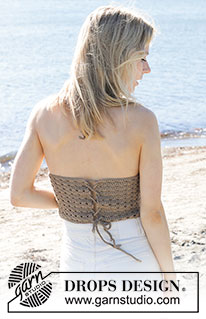











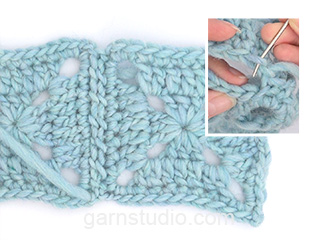
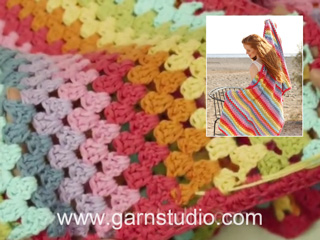
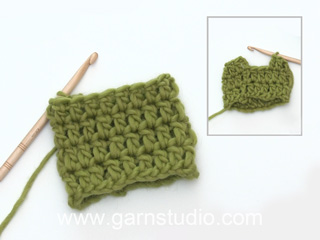

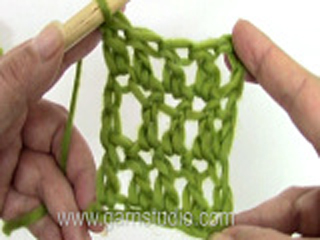
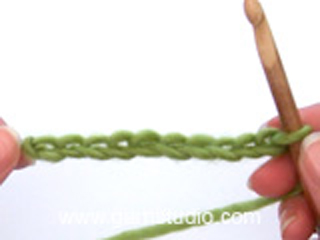

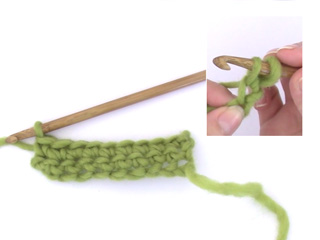
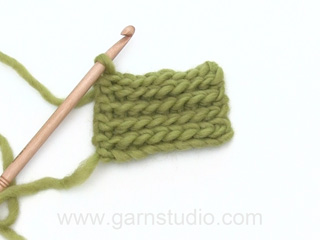

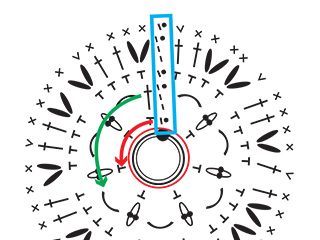



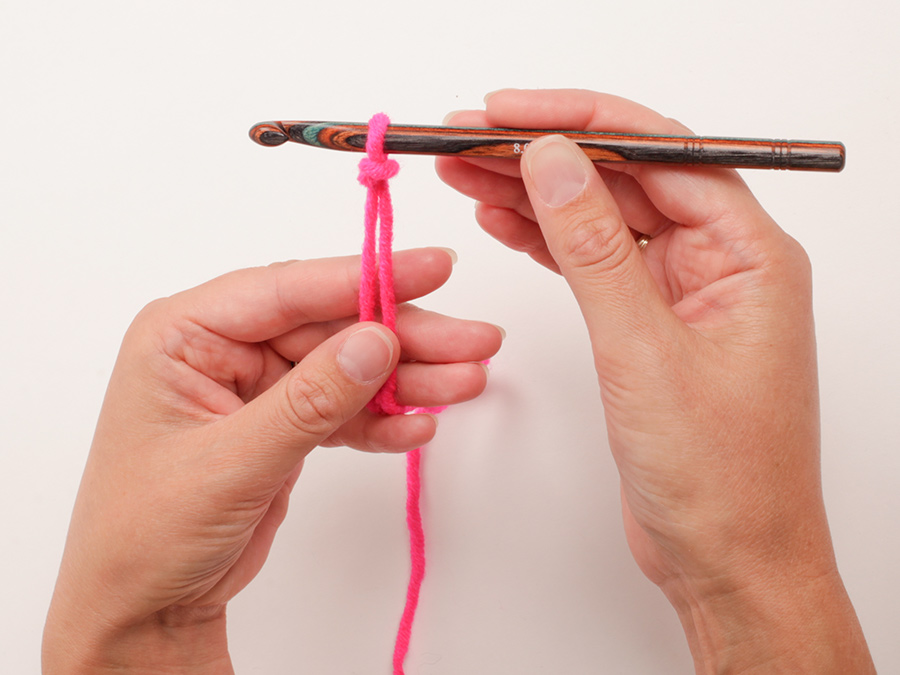

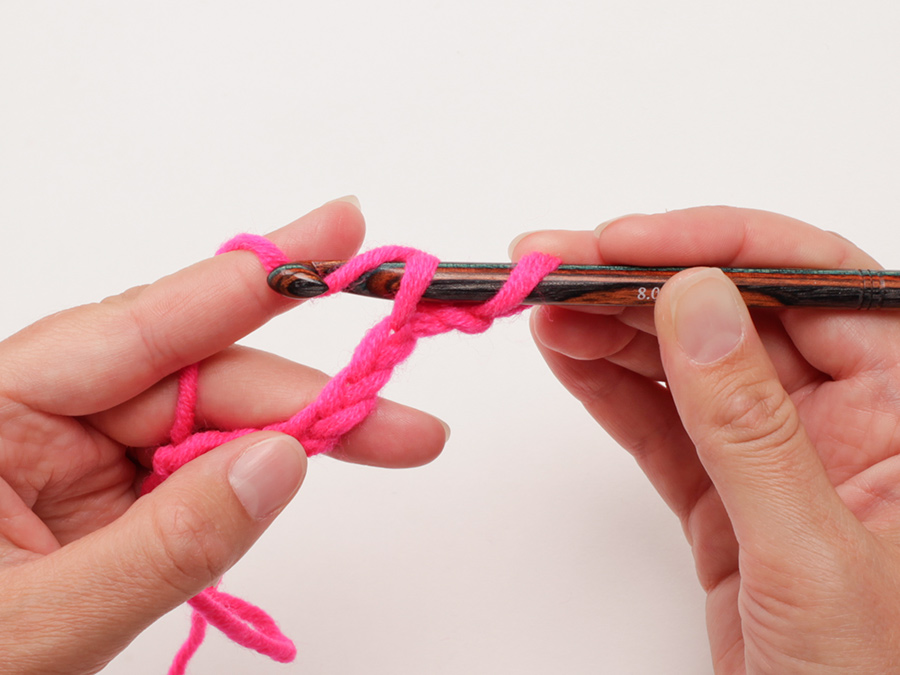
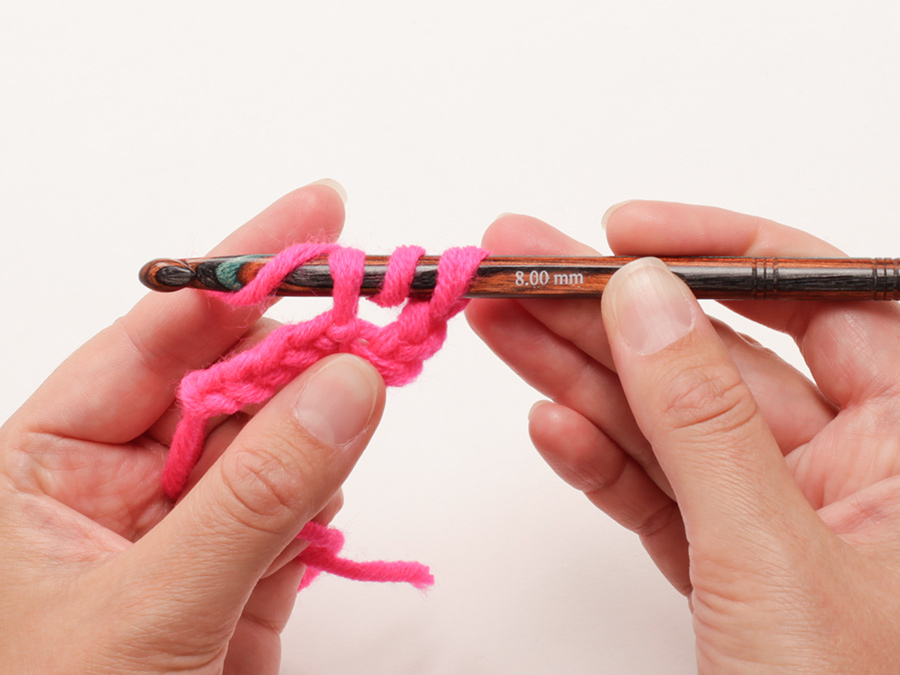






Comments / Questions (26)
Gäller bröstkupan, jag får fram sammanlagt 26 stolpar trots det står ska vara 28 stolpar. stl s - ena 10 stolpar plus 1 stolpe i 4 e luftmaska och 2 st o 1 lm 2 st andra sida 11 stolpar ....?? repade och gjorde om men blir samma resultat.något jag missat ???
10.06.2024 - 21:20DROPS Design answered:
Hei Eva-Lena. I str. S starter du med 15 luftmasker, hekle 1 stav i den 4. luftmasken fra nålen (du har nå 2 staver på 1. rad. De 3 siste luftmaskene av de 15 og 1 stav i 4. luftmasken fra nålen). Deretter hekles det 1 stav i hver av de 10 neste luftmasken = 2 staver + 10 staver. I siste luftmaske hekles det 2 staver + 1 luftmaske +2 staver). 2+10+2+2=16 staver. Så hekles det 1 stav på undersiden av de 12 stavene (i de sammen luftmaskene) = 2+10+2+2+12 = 28 staver. Den siste staven hekles i undersiden av de 3 luftmaskene (av de 15 start luftmaskene) som erstatter 1.stav. mvh DROPS Design
17.06.2024 - 11:04När jag gör bröstkuporna, står det att det ska bli 4 stolpar ökning varje varv, men när jag gör 1 A1 på varje varv i toppen så får jag bara två stolpar ökning. Vad har jag missat?
16.05.2024 - 10:42DROPS Design answered:
Hei Hannah. Se på diagram A.1, der er det 2 ovale sirkler. I diagramforklaringen leser man at 1 oval sirkel = 2 staver. Når du skal hekle A.1 i den siste masken hekler du 1 oval sirkel (= 2 staver) + 1 luftmaske + 1 oval sirkel (= 2 staver) = det er økt 4 staver. mvh DROPS Design
21.05.2024 - 13:25Bonjour. Je crois que la question a déjà été posée mais je ne trouve pas de réponse. Je travaille la taille S. Au 1er rang du bas du top, j'obtiens bien 109m. Au 2eme rang A10 passe d'1 à 3m n'est ce pas ? (Sur le diagramme Rg1=14m/Rg2 et 3 =15m) Donc si je répète les rangs 2 et 3, je ne peux plus avoir 109m ? Où est l'erreur ? Merci pour votre réponse. Cdlt
28.04.2024 - 17:28DROPS Design answered:
Bonjour Christelle, c'est exact, continuez simplement à crocheter les diagrammes comme indiqué, je transfère l'info à qui de droit. Bon crochet!
29.04.2024 - 09:52Problem gelöst! Mit der nötigen Ruhe klappt's dann auch mit der Häkelnanleitung : )
05.04.2024 - 22:14Hallo ihr Lieben, ich häkle die Größe XL und komme ganz zu Beginn nur auf 37 Stäbchen anstatt auf 40... Was übersehe ich, bzw. was mache ich verkehrt? Ganz liebe Grüße Ina
05.04.2024 - 18:42DROPS Design answered:
Liebe Ina, auf der 1. Seite haben Sie (3 Lm + 1 Stb in die 4. Lm = 2 Stäbchen + 1 Stäbchen in je die nächsten 16 Lm = 18 Stäbchen + A.1 in die letzte Luftmasche = 2 Stäbchen = 20 Stäbchen auf der 1. Seite, dann auf die 2. Seite: A.1 = 2 Stäbchen (mit 1 Lm davor) + 1 Stäbchen in die nächsten 18 Lm = 20 Stäbchen = 40 Stäbchen insgesamt. Viel Spaß beim Häkeln!
08.04.2024 - 07:33What measurements are your sizes please for women XS -S -M -L -XL -XXL I’m not sure what size to make ? Thank you
22.03.2024 - 11:58DROPS Design answered:
Dear Dawn, you will find the measurement chart for finished piece at the bottom of the written pattern, compare to a similar garment you have and like the shape to choose the best appropriate size. Read more here. Happy knitting!
22.03.2024 - 15:13Hello, Thanks for your answer. But you still didn't answer my question: at the end of Row 2 and Row 3, how many stitches do I have? Thanks.
23.06.2023 - 13:30DROPS Design answered:
Dear Mrs Carvalho , you will have 149 sts after you have worked first row with A.8 and A.9 and then continue with A.9 only between A.10 and A.7 over all 149 sts. Happy crocheting!
23.06.2023 - 15:57Hello, I'm doing the part of the body (size L) of this pattern and I have doughts in how many stitches the row 2 and 3 have at the end. Is it supposed to finish with 168 stitches, as the beginning, or it has to finish with 149? Also, I think that at 2nd row, the A7 and A10 has to have only two stiches, and not three as indicated, otherwise we will increase 2 stitches for row. Could you please clarify? Thanks for your help!
22.06.2023 - 17:43DROPS Design answered:
Dear Mrs Carvalho, when working diagram A.8 you will skip 1 stitch in each A.8 (4 sts over 5 chains), that's how you will decrease the number of stitches on first row to 149 sts.. Read 1st row from the right towards the left (starting with A.7 and finishing with A.10), then work row 2 starting with A.1, repeat A.9 and end with A.7 (don't work A.8 anymore). And repeat these 2 rows with A.7 over 4 sts on row 2 and3 sts on row 3; A.9 over 4 sts and A.10 over 3sts. Happy crocheting!
23.06.2023 - 07:32Row 3 , the treble cluster Rrow comes out with 135 stitches. It would be helpful if you could crochet the 1st 3 rows giving the correct amount of stitches after each row and do the same on the next 3 repeat rows stating amount of stitches after each row. This should have been written in the pattern.
05.06.2023 - 21:00DROPS Design answered:
Dear Alexandra, which size are you working on? Remember that you don't work the same diagrams on 1st than on 2nd and 3rd row; on the first row you will crochet alternately A.8 and A.9 but on the 2nd and 3rd row you will then crochet only A.9 (A.8 was worked over 5 stitches and you skip 1 stitch so that A.8 ends with only 4 sts. Happy crocheting!
06.06.2023 - 09:04Sorry that should read 135 sts not 145. Still a lot more than 109!
05.06.2023 - 01:46